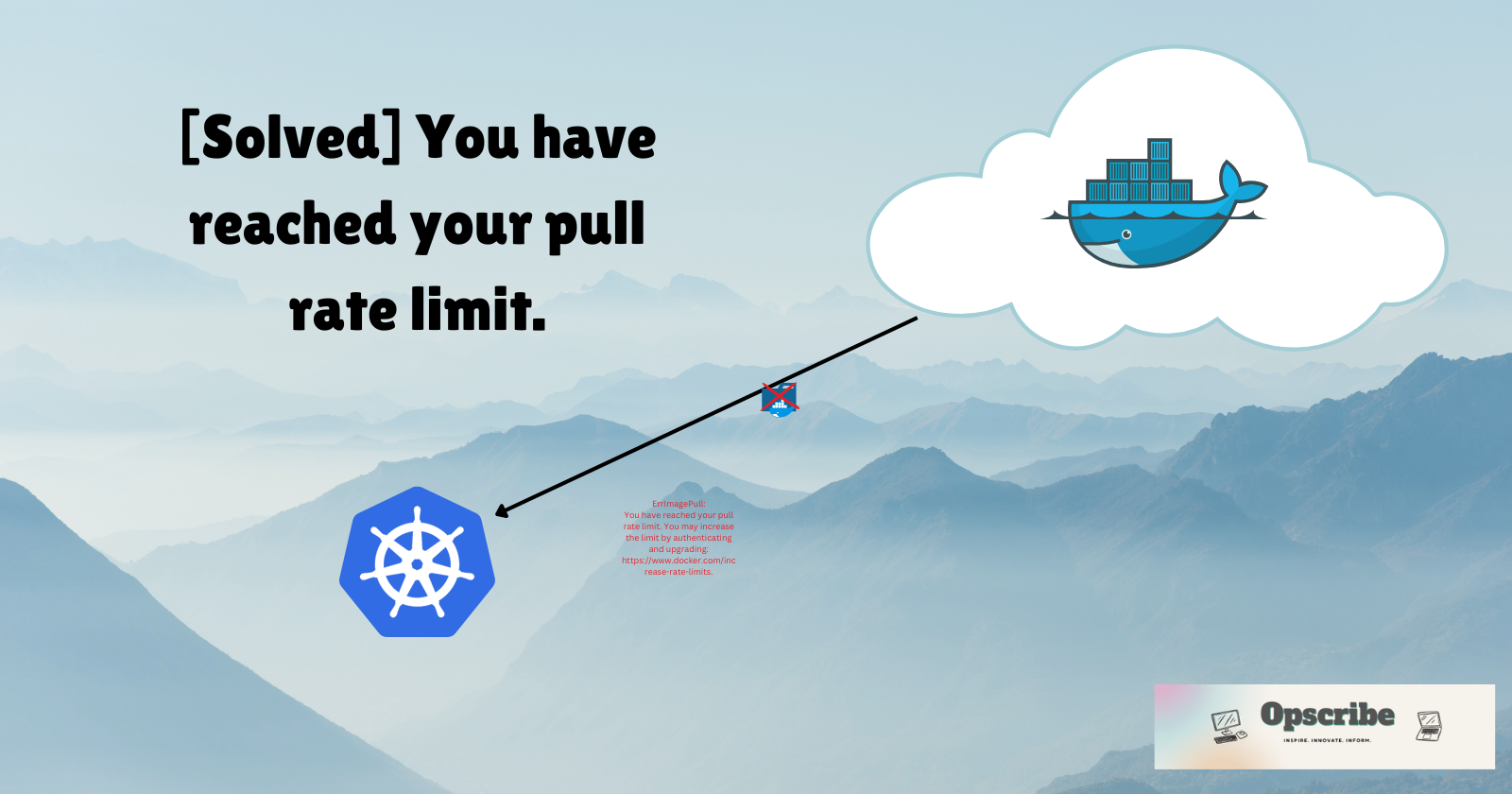[Solved] You have reached your pull rate limit.
 Abhishek Singh
Abhishek Singh
Introduction:
In recent years, Docker has become an indispensable tool for developers and DevOps engineers, simplifying the process of building, sharing, and running applications in containers. Kubernetes, on the other hand, has emerged as the leading container orchestration platform, making it easier to manage containerized applications at scale. However, a common issue that teams encounter when using Docker with Kubernetes is hitting the Docker Hub pull rate limit. In this article, we’ll explore why this issue arises and provide a step-by-step guide to resolving it.
Understanding Docker Pull Limits:
Docker Hub, the default registry for Docker images, introduced rate limits in November 2020 to manage the load on their infrastructure and ensure fair usage. The limits are:
Anonymous users: 100 pulls per 6 hours
Authenticated users: 200 pulls per 6 hours
For large Kubernetes clusters or environments with frequent deployments, these limits can quickly become a bottleneck, leading to failed deployments and disruptions in service.
Why This Issue Occurs in Kubernetes?
Kubernetes orchestrates the deployment, scaling, and management of containerized applications. When a deployment is triggered, Kubernetes pulls the necessary Docker images from Docker Hub. If the number of pulls exceeds the rate limit, Docker Hub starts throttling the requests, resulting in errors and failed deployments.
This issue is particularly problematic in CI/CD environments where automated processes can trigger multiple deployments in a short period. Additionally, scaling up applications or rolling updates in large clusters can rapidly consume the allowed number of pulls.
How to Resolve Docker Pull Limit Issues in Kubernetes?
To overcome Docker pull limits, you need to authenticate with Docker Hub using your credentials. This can be achieved by creating a Kubernetes secret to store your Docker Hub credentials and configuring your Kubernetes clusters to use this secret. Below is a step-by-step guide to implementing this solution.
Step-by-Step Guide:
Step 1: Create a Docker Hub Account If you don't already have one, sign up for a Docker Hub account at Docker Hub. Having an account increases your pull limit and provides a more reliable way to access Docker images.
Step 2: Generate Docker Hub Credentials Obtain your Docker Hub username and password. These credentials will be used to create a Kubernetes secret.
Step 3: Create a Docker Registry Secret in Kubernetes Run the following command to create a Docker registry secret in your Kubernetes cluster. Replace <DOCKER_USERNAME>, <DOCKER_PASSWORD>, and <YOUR_EMAIL> with your actual Docker Hub credentials.
kubectl create secret docker-registry my-dockerhub-secret --docker-username=<DOCKER_USERNAME> --docker-password=<DOCKER_PASSWORD> --docker-email=<YOUR_EMAIL>
Step 4: Create the Secret in All Namespaces To ensure the secret is available in all namespaces, use the following script to create the same secret in every namespace:
for namespace in $(kubectl get namespaces -o jsonpath="{.items[*].metadata.name}"); do kubectl create secret docker-registry my-dockerhub-secret --namespace $namespace --docker-username=<DOCKER_USERNAME> --docker-password=<DOCKER_PASSWORD> --docker-email=<YOUR_EMAIL> done
Step 5: Patch the Default Service Account Patch the default service account in each namespace to use the Docker registry secret:
for namespace in $(kubectl get namespaces -o jsonpath="{.items[*].metadata.name}"); do kubectl patch serviceaccount default --namespace $namespace --patch '{"imagePullSecrets": [{"name": "my-dockerhub-secret"}]}' done
Step 6: Configure Deployments to Use the Secret Ensure your deployments are configured to use the secret for pulling images (If your deployment is not using default serviceaccount then only). Here is an example deployment configuration:
apiVersion: apps/v1
kind: Deployment
metadata:
name: my-deployment
spec:
replicas: 1
selector:
matchLabels:
app: my-app
template:
metadata:
labels:
app: my-app
spec:
containers:
- name: my-container
image: my-dockerhub-username/my-image:latest
imagePullSecrets:
- name: my-dockerhub-secret
Apply your updated deployment configuration:
kubectl apply -f my-deployment.yaml
If your deployment is using different serviceAccount and you don't want to modify your deployment, then you can patch that specific serviceAccount using following command:
kubectl patch serviceaccount <serviceaccount-name> -n <namespace> --patch '{"imagePullSecrets": [{"name": "my-dockerhub-secret"}]}'
Conclusion:
By following these steps, you can effectively bypass the Docker Hub pull limits and ensure your Kubernetes deployments run smoothly without interruption. Creating and using Docker registry secrets in Kubernetes not only helps you stay within the allowed limits but also secures your deployments by using authenticated access to Docker Hub.
Implementing these practices is crucial for maintaining a reliable and efficient CI/CD pipeline, especially in large-scale Kubernetes environments. Stay ahead of potential issues and keep your applications running seamlessly by managing Docker pull limits effectively.
If you found this article helpful, please consider dropping a like. Comment below if you are facing any issues.
Thanks
Subscribe to my newsletter
Read articles from Abhishek Singh directly inside your inbox. Subscribe to the newsletter, and don't miss out.
Written by

Abhishek Singh
Abhishek Singh
Hi This is Abhishek Singh, Devops Engineer by profession and Gamer by passion. I'm a devops engineer with more than 3 years of experience in Linux, Monitoring and Devops. I'm huge Open source supporter and Linux lover. In free time I love to play Minecraft and Valorant.